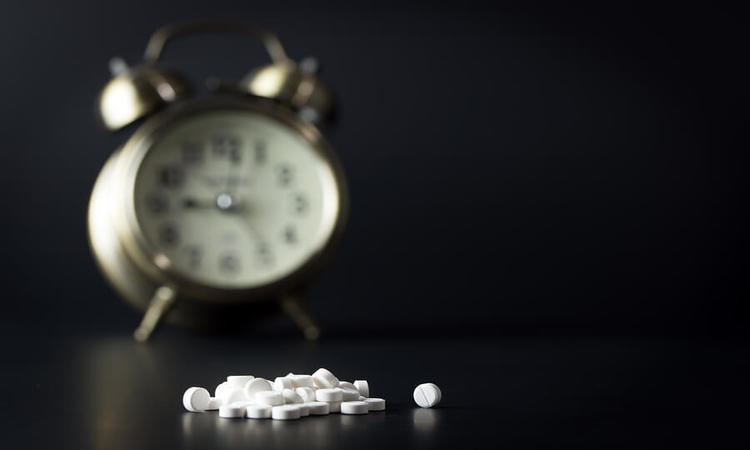
How Long Does Valium Stay in Your System? – After consuming Valium orally, about 90% of the drug is absorbed by the body. The peak concentration occurs in about 1 to 1.5 hours, according to the Food and Drug Administration.
What Is Valium?
Valium (diazepam) is a long-acting benzodiazepine with a half-life that ranges from 20 to 50 hours for a 5 mg dose. Valium is usually prescribed for anxiety or obsessive-compulsive disorder, but it may also be used for the treatment of alcohol dependence or seizures.
Valium acts on the central nervous system by increasing the availability of GABA (gamma-Aminobutyric acid). This chemical decreases activity and results in feelings of calm and relaxation.
How Long Does Valium Stay in Your System?
How long Valium stays in your system influences how the medication will affect you. As noted, Valium is a long-acting benzodiazepine. This fact means that it remains in a person’s system and produces effects longer than short-acting drugs in this class.
The medication’s half-life helps predict how long someone could expect to test positive for Valium based on when they took their last dose. However, due to individual factors and the fact that the half-life has a relatively wide range, a person may want to expect that it will be on the longer side of the spectrum.
A test for Valium can be performed using hair, saliva, urine, or blood samples. How long the drug remains detectable depends on several factors:
- Age
- Weight
- Body fat content
- Metabolic rate
- Use of other substances
- Method of administration
- Average dose
- Kidney function
- Liver health
Valium can be identified in hair follicles for up to 90 days. These are used primarily to check for long-term drug use, as they can’t tell if the person is using the substance currently.
A urine test is probably the most common method used to determine if a person has used Valium recently. It can be found in urine for up to six weeks after the last dose.
Saliva testing is rarely used for Valium since this drug is only detectable via this method for up to 60 hours after the last dose.
Blood testing is another means that might be used to determine if a person has Valium in their system. However, like urine, the metabolites of the drug do not remain in the blood very long—only about two days after the last dose.
When a person enters a detox facility, they will often conduct one of these tests to evaluate how much Valium is in a person’s system. In most cases, they use either a urine screen or blood test.
Valium Detox Timeline
Within 1-4 days of taking the last dose, acute withdrawal symptoms can onset. These tend to be the most noticeable by the third day. They may include the following:
- Nausea and vomiting
- Cramps
- Headaches
- Tremors
- Stomach pain
- Rebound anxiety
- Increased heart rate
- Seizures
- Increased blood pressure
- Drug cravings
- Depression and mood swings
- Panic attacks
The acute period is followed by another stage that lasts for between 10-14 days. During this stage, the following symptoms may occur:
- Drug cravings
- Mild headache
- Nausea
- Depression
- Anxiety
- Lightheadedness
- Mild fever
- Chills
- Bouts of anxiety
The symptoms in this second phase are usually milder than the acute phase. After this stage, it is possible to continue encountering anxiety and depression as the body stabilizes.
Ultimately, however, every person withdrawing from Valium will have a different experience. For this reason and others, getting professional help with this process is the best option. Attempting to detox from benzodiazepines on your own could lead to life-threatening withdrawal symptoms. Therefore, medical supervision is always required.
Two of the most severe potential effects are seizures and psychosis. This condition is similar in many ways to alcohol withdrawal syndrome. Psychosis is characterized by a partial or full break from reality. A person might experience the following:
- Delusions
- Hallucinations
- Depression
- Insomnia
- Anxiety
- Paranoia
They may also engage in inappropriate behavior, speak incoherently, and have a difficult time functioning in general.
The average seizure lasts between 30 seconds to 2 minutes. They can result in long-term effects or cause the person not to wake up if the seizure persists for longer than 5 minutes. A seizure occurs as a consequence of abnormal brain electrical activity, and may include the following symptoms:
- Confusion
- Convulsions
- Anxiety
- Fear
- Loss of awareness
- Loss of consciousness
Treatment for Valium Addiction
Valium has beneficial medical purposes, but it also has at least a moderate potential for abuse and dependence. Those who suspect they may be dependent on this drug should seek help from a detox and rehab program. These programs can help to make the withdrawal process more comfortable and ensure a person’s safety.
Contact Recovery By The Sea anytime to learn about our treatment options. We tailor our comprehensive programs to meet the specific needs of our clients. We provide a warm, comfortable environment that fosters healing from addiction while our clients undergo withdrawal and the process of recovery.
Let us help you break free from addiction and begin to live the happy and fulfilling life you deserve!
READ THIS NEXT: Is Xanax a Barbiturate?